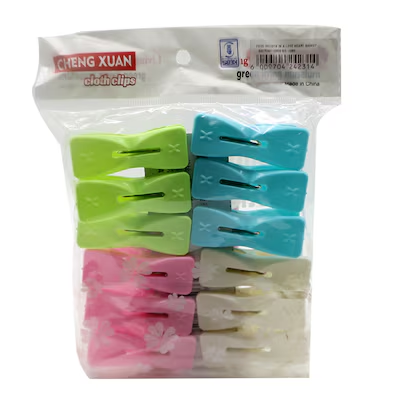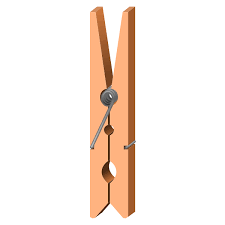Clothes pegs may seem like a small thing, but using and storing them properly can make your laundry routine smoother, protect your clothes, and increase the lifespan of the pegs.
In this guide, you’ll learn:
-
✅ How to use clothes pegs correctly
-
✅ Common mistakes when using cloth pegs
-
✅ How to store clothes pegs to avoid damage
-
✅ Bonus: Smart alternatives to traditional peg storage
✅ How to Use Clothes Pegs Correctly
Here’s the proper way to use clothes pegs when drying your laundry:
1. Choose the Right Type of Peg
-
Use stainless steel clothes pegs for heavy items like towels and jeans.
-
Choose rust-resistant clothes pegs for outdoor drying in humid areas.
2. Clip Clothes at the Seams or Hems
-
Peg the edge of the garment, such as the bottom hem or sleeves—not the middle.
-
This helps avoid permanent marks or stretching of fabric.
3. Distribute Weight Evenly
-
Use two pegs per garment to keep it from falling.
-
Hang heavier clothes across two lines if possible.
4. Use Pegs on a Secure Clothesline or Rack
-
Make sure the line is tight and not sagging.
-
Avoid pegging on sharp wires or rusty lines—they can stain clothes.
⚠️ Common Mistakes When Using Clothes Pegs
| Mistake | Why It’s a Problem |
|---|---|
| Using one peg for large clothes | Causes sagging or clothes to fall |
| Pegging wet clothes in the middle | Leaves deep marks or stretches fabric |
| Using brittle or old pegs | Pegs may snap and damage clothes |
| Leaving pegs on the line outdoors | Shortens peg lifespan due to sun/rain exposure |
🧴 How to Store Clothes Pegs Properly
Proper storage keeps your pegs clean, dry, and usable for longer. Here’s how:
1. Use a Peg Basket or Peg Bag
-
A peg basket with holes allows water to drain after use.
-
A peg bag (preferably waterproof) can be hung on the drying line.
2. Store Indoors After Use
-
Always bring pegs inside after drying laundry.
-
Leaving pegs outside causes them to crack, fade, or mold.
3. Keep Pegs Away from Direct Sunlight & Rain
-
Store in a cool, dry area like your laundry room, kitchen, or under the sink.
-
Avoid high humidity places like bathrooms.
4. Clean the Pegs Occasionally
-
Wash them with warm water and dish soap if they look dusty or sticky.
-
Let them dry fully before returning them to storage.
🧠 Bonus: Smart Peg Storage Ideas
| Idea | Benefit |
|---|---|
| Old tin containers or biscuit tins | Budget-friendly and keeps pegs dry |
| Plastic containers with holes | Promotes airflow and drainage |
| Hanging cloth peg bags | Easy to access while hanging clothes |
| DIY peg buckets with handles | Portable and ideal for outdoor drying |
💡 Pro Tips for Longer-Lasting Pegs
-
✅ Rotate your pegs—don’t always use the same ones
-
🧽 Clean pegs monthly to remove dust or mold
-
❌ Don’t use damaged pegs—they may snag or tear your clothes
-
🛍️ Buy high-quality pegs that resist UV and moisture
🔚 Final Thoughts
Clothes pegs are a simple yet essential laundry tool. When used and stored properly, they’ll serve you well for months—if not years.
Whether you’re managing a household or a busy laundromat in Kenya, follow these tips to ensure your pegs stay effective and your laundry stays secure.



0 Comments